Day 3 – Tuesday
Since we were able to get out of the city proper the day before and see Sintra and other sites, the focus today would be exploring Lisbon itself. First up with be a modified, self-guided walking tour from one of Rick Steves’ Guidebooks. In the afternoon, we would be meeting up with Cristina, a guide that I connected with before the trip who offers walking tours of Lisbon.
Monastery of Jerónimos

The first stop on our self-guided walking tour was the Monastery of Jerónimos. This monastery was commissioned by King Manuel I, who was king at the time of Vasco da Gama’s legendary voyage to India in 1498. The site selected was near the departure point of Vasco de Gama’s voyage (his tomb is located in the monastery). The King selected the monastic Order of Saint Jerome to take up residence in the monastery.
Construction on the monastery and church began in 1501 and continued for over a century, funded in large part by the “pepper tax” (a tax on the spice trade) and a levy on trade with Africa and the Orient. There were many architects involved in the design, several of whom in the early 1500s began developing what would become known as the Manueline style of architecture: an ornate style with complex sculptural themes that included limestone carvings of maritime elements and items discovered during naval expeditions.
Unlike most of the other buildings in Lisbon, the monastery largely withstood the 1755 Lisbon earthquake and the damage that did occur was quickly repaired.
In 1833, religious orders were dissolved in Portugal, and the Monks from the Order of Saint Jerome vacated the monastery. Ownership of the monastery was given to the Real Casa Pia de Lisboa, a charitable organization that operated a school and orphanage there until 1940.
In 1983, the Jerónimos Monastery was classified as a UNESCO World Heritage Site, along with the nearby Tower of Belém.

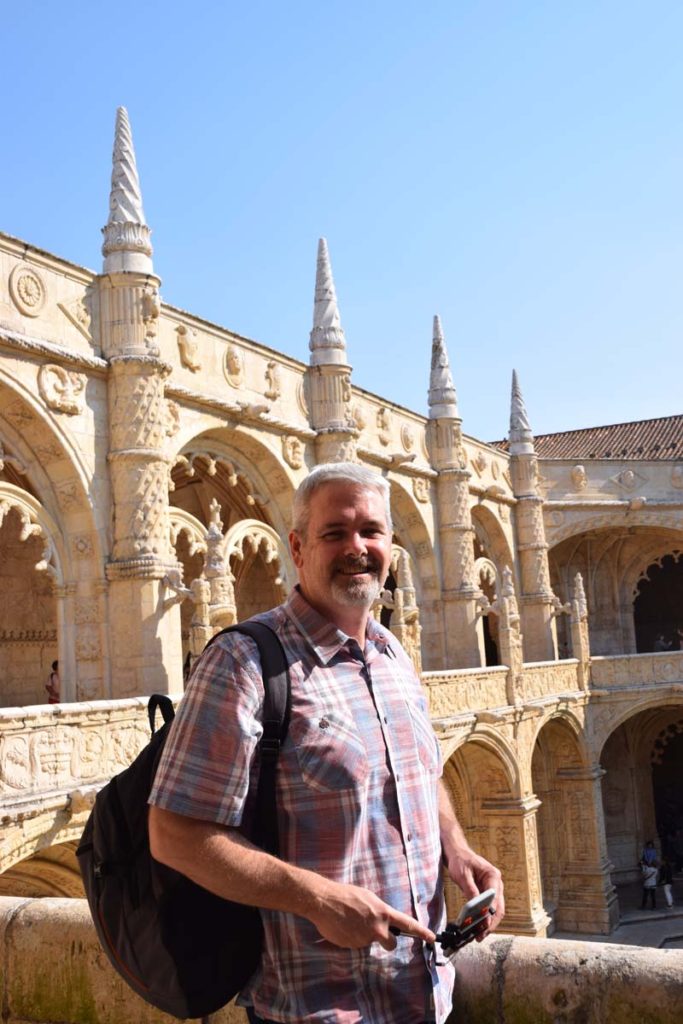 |
 |
National Coach Museum
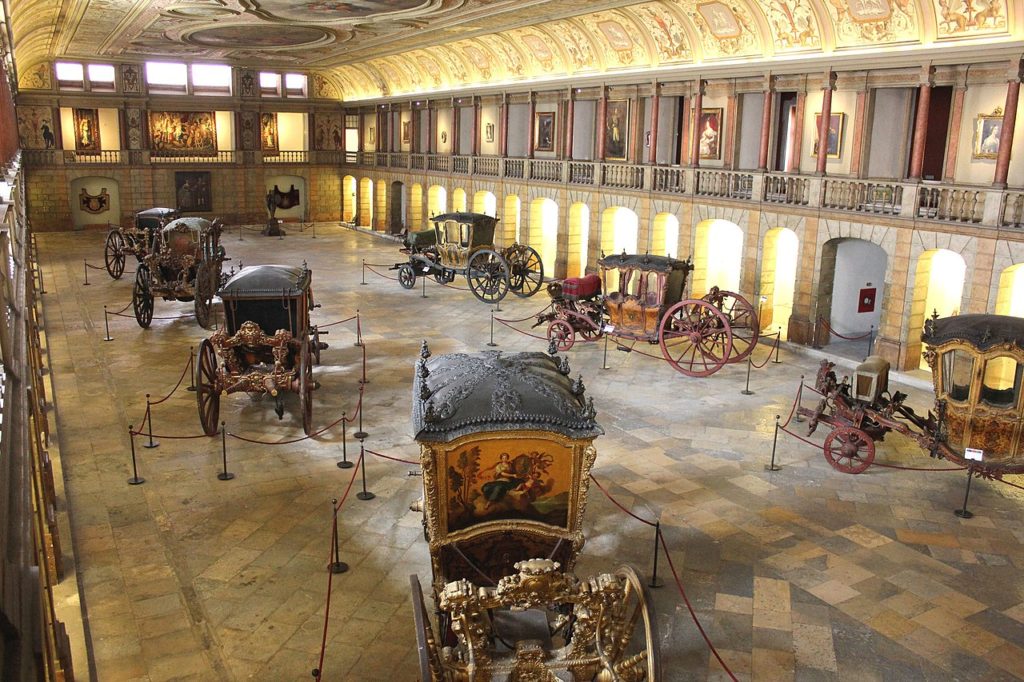
Our next stop on our walking tour took us to the National Coach Museum.
The original museum was created in 1905 by Portuguese Queen Amélia to house an extensive collection of carriages belonging to the Portuguese royal family and nobility. The coaches were originally displayed in the Royal Riding Hall of Belém, the former home of the Portuguese School of Equestrian Art.
The inner arena was used for training horses, as well as for horse riding exhibitions, which could be watched by the Royal Family from the balconies along each side.
In 1944, a new hall was inaugurated, expanding the available space for more coaches. In 2015, a new museum near the Royal Riding Hall was completed, and the bulk of the collection moved into the new building.

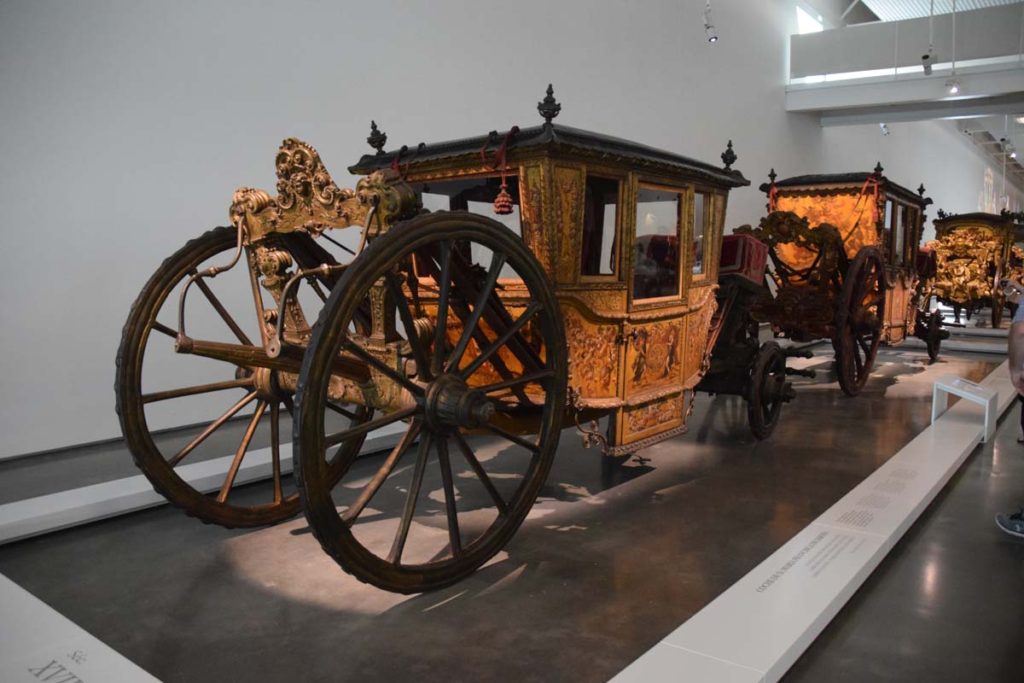
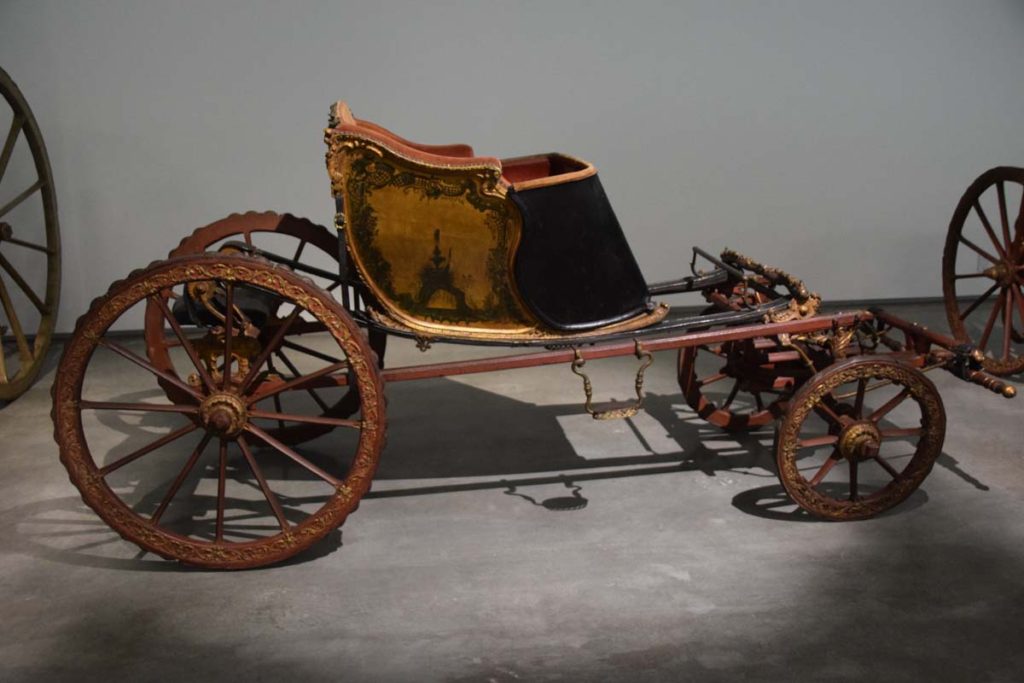
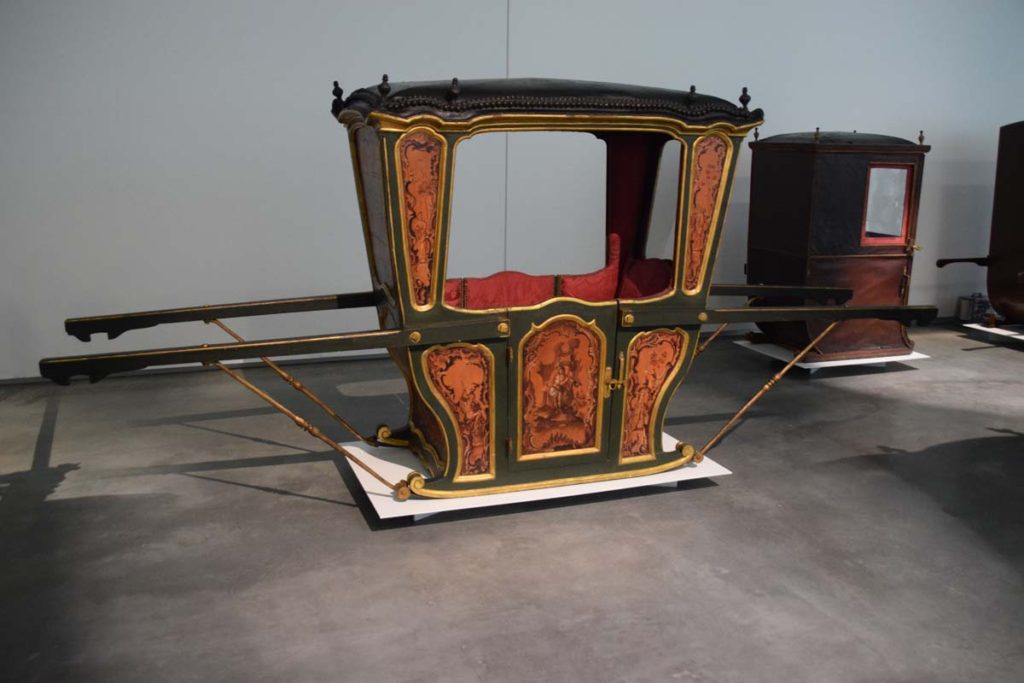
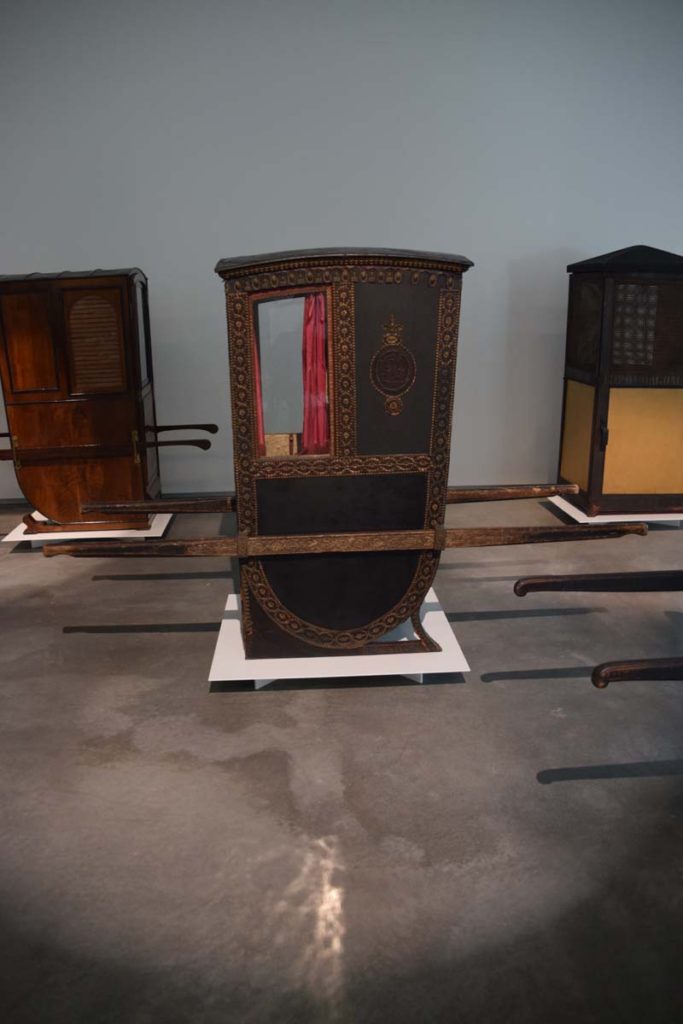
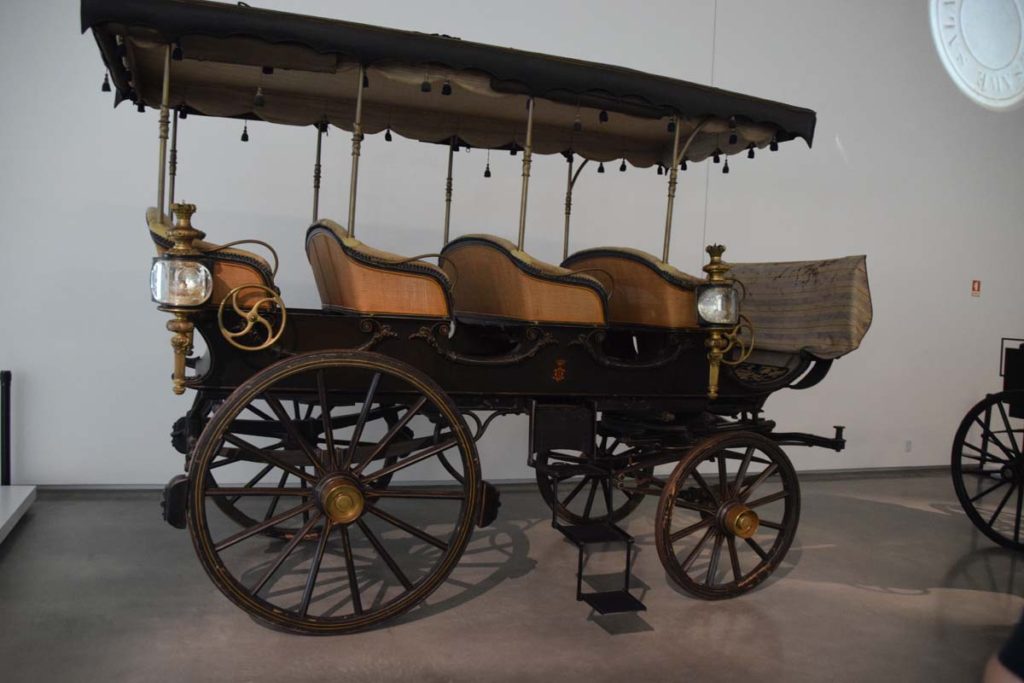
After a morning of walking around Lisbon and seeing some amazing sites on our own, it was time for lunch! Since Jody and I had visited the Time Out Market before everyone else had arrived in Lisbon, we decided that it would be good for the rest of the crew to enjoy the experience as well, so we set off for a quick bite to eat there.
Guided Walking Tour of Lisbon
After lunch, we headed over to meet up with Cristina, who would be our walking tour guide for the afternoon. We did a round of introductions, and Cristina told us that our route would begin with the Saint Jorge Castle, then we would head over Alfama, Baixa, Chaido and Bairro Alto neighborhoods. We were exited to get started, so we headed uphill towards the Castelo de São Jorge.
Castle of Saint Jorge

Castelo de São Jorge (Saint George’s Castle) sits on a high hill overlooking Lisbon. Humans have occupied the hill since at least the 8th Century BC, and the first fortifications were built around the 1st Century BC. It has been occupied successively by Phoenicians, Carthaginians, Romans, Moors, and finally the Portuguese, who captured it during the 1147 Siege of Lisbon. Since that time, it has served as a royal palace, a military barracks, a National Archive, and now as a national monument and museum.





After walking back down the hill from the castle, we embarked on an afternoon journey that introduced us to some of the sites, churches, and views of Lisbon.

This is believed to be the oldest dwelling in Lisbon. This house survived the devastating earthquake of 1755 and is over 500 years old.

The Cathedral of Saint Mary Major, also known as the Lisbon Cathedral (or simply the Sé), is the oldest church in Lisbon. It was built in 1147, and survived the 1755 earthquake. It has been renovated and restored many times over the centuries. It was designated a National Monument in 1910.
Lisbon Street Art
One thing Cristina pointed out as we walked around Lisbon was the amazing amount and quality of the street art and graffiti. Unlike the US where graffiti is more akin to vandalism, it manifests itself more as an art form in Lisbon. There are programs to organize the graffiti artists and their artwork, and we saw some truly spectacular works as we tromped around Lisbon.

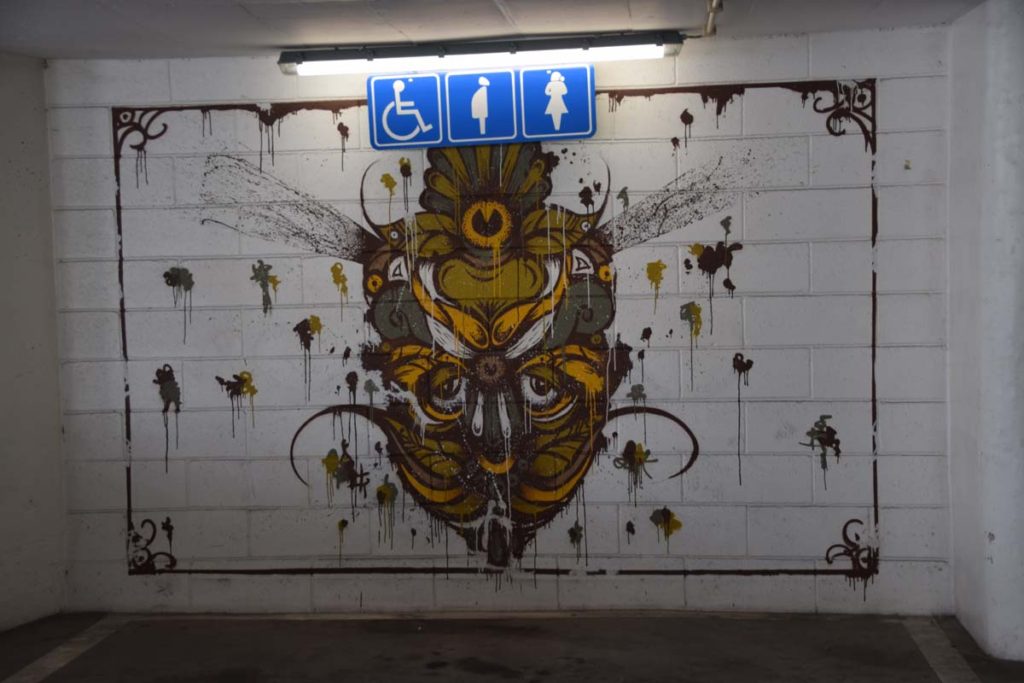




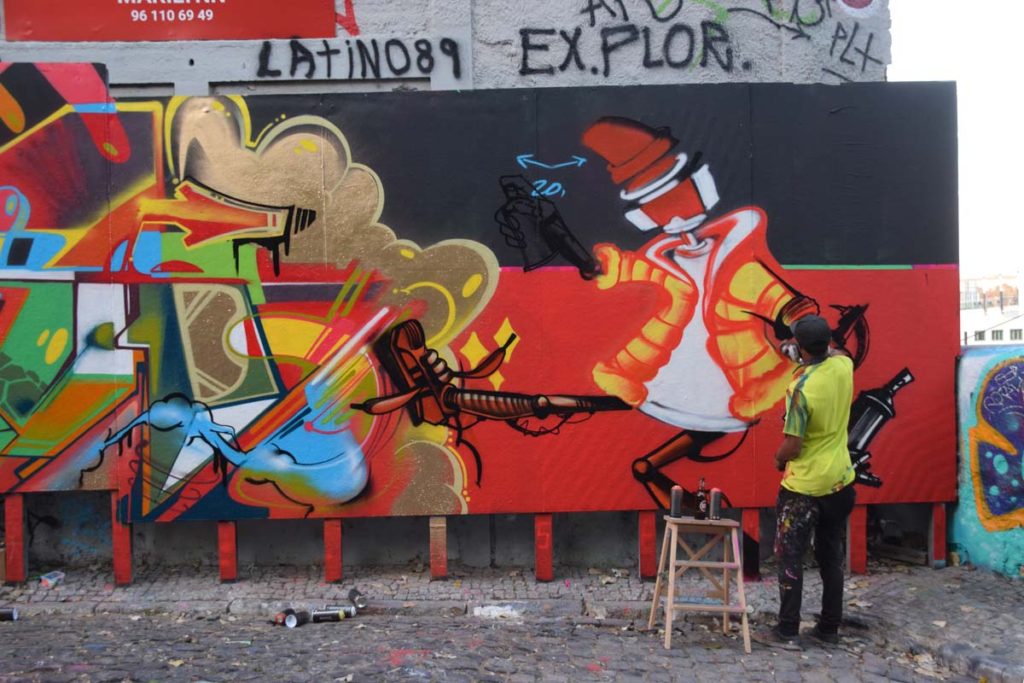
We saw so many amazing things on our afternoon walk, and Cristina provided us with great stories, history, and quirky facts about the sites along our route.







